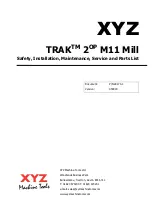
7 Operation on xDSL accesses
40
ARGUS 152
Vectoring
mode
Vectoring mode defines how ARGUS behaves when synchronising with
DSLAM:
- Non-vectoring (off)
This is standard VDSL2 with non-vectoring-capable DSL access
multiplexers (DSLAMs) and modems. However, it can also be used for
mixed operation with non-vectoring-capable modems on vectoring-capable
DSLAMs. In such a case, the simulated modem is throttled to the ADSL2+
bandwidth (max. 16 Mbit/s).
- Full vectoring
Full vectoring operation requires vectoring-capable DSLAMs and modems.
VDSL2 vectoring is supported when this technology is present at both ends
of the bundle.
Default:
Full vectoring
Retrans-
mission
(G.INP)
When retransmission (G.INP, G.998.4) is used, the downstream of VDSL2
links is protected against pulse noise on layer 1. Delays and packet losses
are minimised; however, this increases the interleave delay for
downstream.
Default:
Down- & Upstream
When VDSL Vectoring or Retransmission (G.INP) are active, ARGUS
shows in the status line a blue highlighted „V“ for Vectoring or „R“ for
Retransmission.
When VDSL Vectoring or Retransmission (G.INP=) are unlocked but not
active, ARGUS shows in the status line a grey highlighted „V“ for Vectoring
and „R“ for Retransmission.
Profiles (
<Edit>
edit profiles)
Router
IP version
Determines which IP version is to be used.
IPv4:
IPv6:
Dual Stack
IPv4/IPv6:
Internet Protocol version 4 acc. to RFC 791
Internet Protocol version 6 acc. to RFC 2460
If IPv6 is available, this protocol is preferred; if not,
ARGUS switches to IPv4.
Default:
IPv4
















































